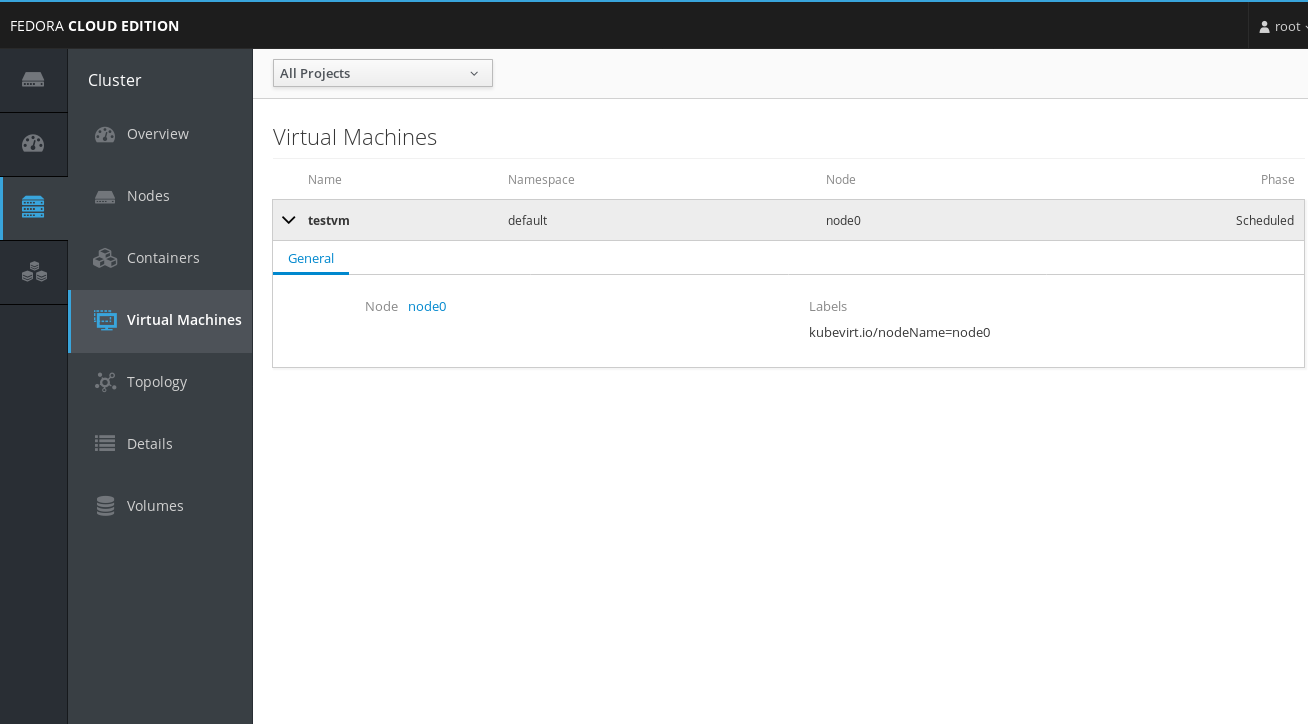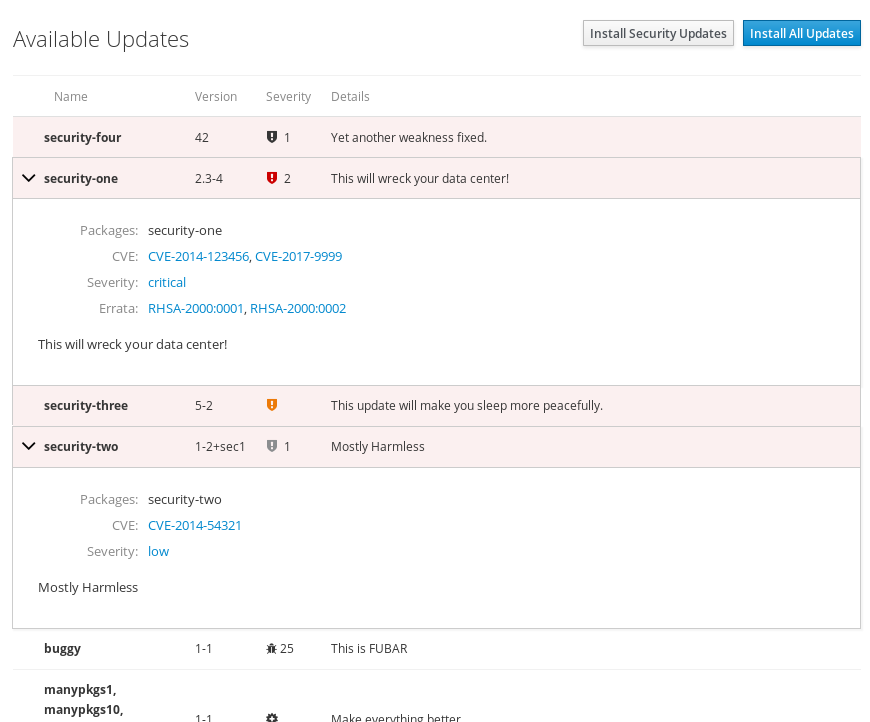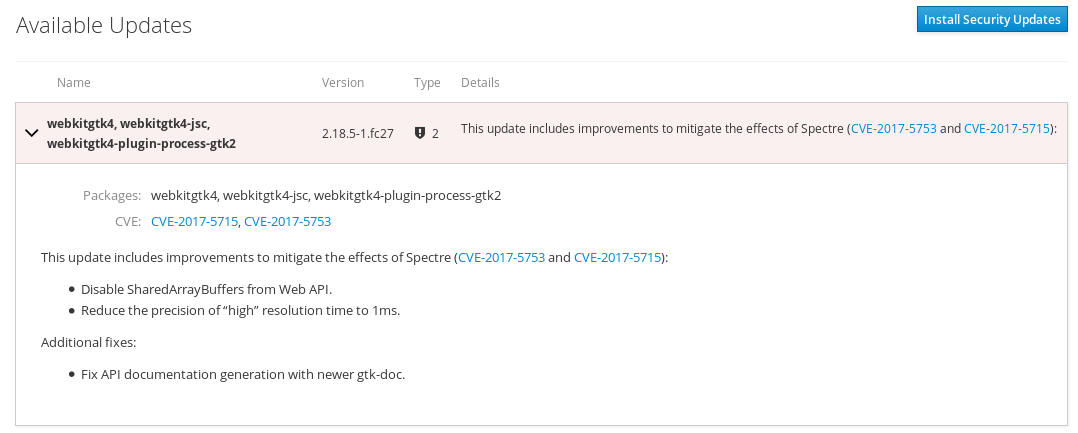Cockpit 160
Cockpit is the modern Linux admin interface. We release regularly. Here are the release notes from version 160.
Add kubevirt Virtual Machines overview
kubevirt is a project for running KVM virtual machines in Kubernetes. Cockpit’s “Cluster” (Kubernetes/OpenShift) dashboard can now show the status of these VMs in the new “Virtual Machines” menu entry. This only appears when kubevirt is installed and active:

In the future this will be extended to also do operations on the VMs.
Thanks to Jakub Niedermertl for this feature!
Redesign package list on Software Updates page and show RHEL Errata
The table of available updates now looks and behaves much more consistently to other products that handle software packages, like Satellite and Welder:
-
It now only shows the first line of the description and number of fixed security issues or bugs in the table, and moves the full description and detailed bug/CVE lists into an expander.
-
It shows icons for the severity of the update, i. e. “security”, “bug fix”, or “enhancement”.
-
On Red Hat operating systems it also shows the classification of security updates and links to the corresponding Errata.

- PackageKit often provides the update details in Markdown format. This now gets rendered properly instead of shown verbatim in text.

AppStream handling on Apps page
On Fedora, the Apps page now installs the appstream-data package when
checking for new applications, which ships the
AppStream metadata
for discovering new Cockpit applications.
This Cockpit version also adds AppStream metadata for its own
cockpit-sosreport package (which is not installed by default). Once
appstream-data gets updated again in Fedora, cockpit-sosreport will appear on
the Apps page as an available extension.
Change CPU graphs to use “100%” for a fully loaded multi-processor system
Previously, the CPU graphs on the System, Dashboard, and Containers pages were
calibrated to 100% for a single CPU core, so that the graph maxed out at e. g.
400% for a system with four busy CPU cores. Now it gets scaled so that “100%”
means “all cores are fully busy”, which is the behaviour of command line
tools like top.
Show storage, network, and other numbers with 3 digits of precision
Previously numbers like the free space on a storage device were shown with one fractional digit only, which led to overly imprecise numbers like “0.1 GiB”. The new behaviour provices a more consistent accuracy regardless of the number’s magnitude.
Add an example bastion container
A bastion container provides Cockpit’s web service without actually logging in to the machine on which it runs, but only connects to remote hosts via ssh.
This is not a ready-to-use product for now, but we encourage you to experiment with the example and give us feedback if you have such a use case.
Try it out
Cockpit 160 is available now:
